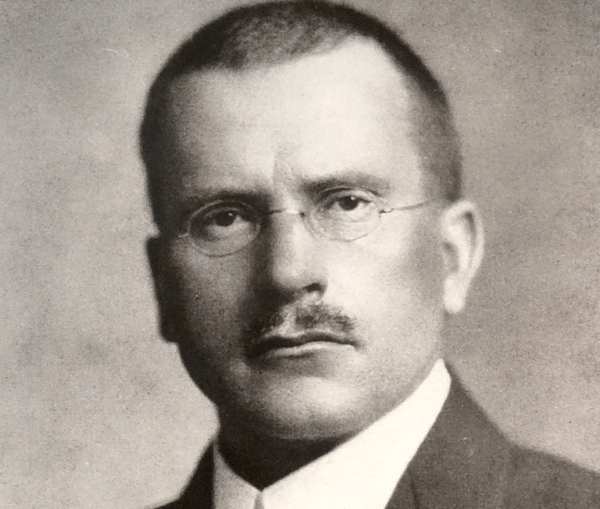The magician archetype is one of the most interesting figures in Carl Jung’s analytical psychology. This archetype represents thought, science, transformation, inspiration, and innovation. Some famous people who exhibit or exhibited this archetype include Albert Einstein, Nikola Tesla, Elon Musk, and Steve Jobs. Engineers and scientists who promoted or still promote the advancement of our society.
When we think of the set of archetypes or primordial images that this famous Swiss psychiatrist created, the hero always tends to stand out. We admire heroes because they’re the ones who perform great feats. However, we tend to forget that, behind them, they always have entities to guide, advise, and instruct them.
Magicians are actually the most remarkable personalities on the archetype scale. They’re associated with the intellect, but it’s a dynamic, active, and transformative intellect. These people might be involved in physics, economics, psychology, engineering, or medicine. They make the world evolve and heal, and they rise up as inspiring beings.
“The practice of magic consists of making what is not understood understandable in an incomprehensible manner.”
-Carl Jung-
What are archetypes?
An archetype defines a series of emotional, cognitive, and behavioral patterns that guide our way of processing and acting in the world. Carl Jung developed this theoretical approach within his analytical psychology. He proposed that human psychological development isn’t a blank slate. In other words, it’s not free or conditioned by our early experiences, education, or social environment.
In fact, for Jung, our personality and psyche are predestined by archetypes. He claimed that we all, in some way or another, can have something in us of the hero, the ruler, the explorer, the jester, the innocent, the magician, etc. Indeed, every one of these psychic patterns is found in our collective unconscious and is repeated, regardless of time or place.
Jung’s book, The Archetypes and the Collective Unconscious acts as a reference for understanding this topic. However, beyond the inevitable esoteric and spiritual connotation of many Jungian theories, these archetypes also form a frame of reference in popular culture. For example, many literary characters follow the pattern of an archetype.
When it comes to the figure of the magician, the marketing world is greatly influenced by this image. Let’s take a closer look.
The archetype of the magician
It’s often said that few companies apply the wizard archetype as much as Apple does. In fact, their new products tend to put forward the idea that they change reality. The idea being, that with each new model of cellphone, the consumer will be able to do what they’ve always dreamed of.
In some ways, many technology companies also start from this point. For example, Elon Musk, with his engineering, space projects, and Neuralink company conforms to this particular archetype.
Let’s see what defines the figure of the magician, according to Carl Jung.
From introspection to innovation
Arthur C. Clarke said that any sufficiently advanced technology is indistinguishable from magic. The archetype of the magician starts from the same idea. It’s related to the magical and esoteric because it starts from introspection from which almost impossible and challenging ideas are born.
In fact, something that starts off as little more than a mystery ends up being an exceptional achievement. Something wonderful that helps and advances.
The reflective mind is constantly learning
Philosopher, Walter A. Shelburne wrote a book entitled Mythos and Logos in the Thought of Carl Jung. In this work, he analyzes each of the archetypes. Without a doubt, the image that stands out is that of the magician. Shelburne describes this archetype as a humble personality capable of accepting that they don’t know everything. In fact, they accept that authentic wisdom involves continuous learning.
Every time they acquire new knowledge, they reflect on it and pass it through a filter of intuition. They adapt all their wisdom to their own perspective. In this way, they can later transmit it to their environment in a more powerful and transformative way.
“Intuition gives outlook and insight; it revels in the garden of magical possibilities as if they were real.”
-Carl Jung-

The archetype of the magician, imposing yet helpful
King Arthur feared Merlin, but Merlin always helped him. Luke Skywalker also showed great respect for Obi-Wan Kenobi and Yoda. Indeed, he knew that they were wiser and more powerful than him. However, they helped him to be a great Jedi Knight. It seems that the archetype of the magician stands out as a mysterious, distant, and sometimes even disturbing figure.
The same occurs in many ancient tribes. Shamans and healers were viewed with fear, but they acted as necessary for the harmonious balance of the group. In fact, their art, halfway between the magical and the scientific, the esoteric and the rational, helped to heal, give wisdom, and inspire progress.
Carl Jung’s analytical psychology was nurtured by spiritual and anthropological roots. His theory on archetypes described patterns of behavior that, in certain ways, we can all develop. Indeed, awakening our desire for knowledge in order to create a better world is something we should all aspire to.
The post The Magician Archetype According to Carl Jung appeared first on Exploring your mind.



















Comments